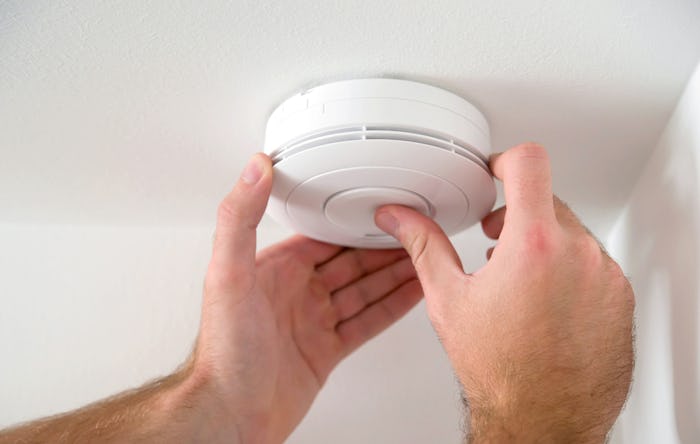Life

You Probably Don't Have Enough Carbon Monoxide Detectors In Your Home
I'll be honest. When I moved into my home, I just accepted the number and placement of carbon monoxide (CO) detectors and smoke alarms in my house, and changed the batteries twice a year. It wasn't something I gave much thought. But it seems like more CO-related deaths are being reported on the news every year, and that has me freaking out. I don't trust makeup artists with my eyeliner, but I'll trust whoever lived in my house before me with the safety of my children? Utter foolishness. But how many carbon monoxide detectors do you need? Where do they go? All of this is information I didn't have, but needed in order to calm my mind and keep my family safe.
The recommendations as to how many CO detectors you'll need, and where they should go, is pretty straight forward — the number you'll need depends on how big your house is. You'll need one on every floor, plus one near the sleeping quarters, one near the heater, and another one near the garage, according to the experts at Sterling Home Inspections. They also wrote that the CO detectors should be placed at least 5 feet from the ground, not in direct sunlight, and you should make sure they aren't in a particularly humid area of the home, like a bathroom.
CO detectors are super affordable, and I've seen them in the strangest of places from Aldi to the discount home supply store that I like to frequent. The unit I have not only beeps and speaks, but because I am deaf, it flashes brightly to alert me in the event of an emergency. A tip I learned from a friend is to make sure that the tone and alert of the CO alarm is different from the smoke detectors in your home so that you won't get confused when you call 9-1-1, which is absolutely what you should do when your CO alarm goes off.
CO detector manufacturer Kidde noted that it's important that your CO detectors not be placed in areas with dead air, like sealed closets, and away from doors and windows, which dissipate the carbon monoxide and might skew the reading. Also, anywhere you have an appliance or home feature that might produce CO, like your stove, furnace, water heater, or fireplace, make sure there's a CO detector between 5 and 20 feet from that location. If it's a combined smoke and CO detector, they'll need to be placed every 40 feet, according to the manufacturer.
How many carbon monoxide detectors do you need? At least one per floor, placed within 20 feet of a carbon-producing appliance. Also, do not neglect your batteries. Change them twice per year, and test each unit once per month. It sounds like a lot — excessive even — but it's honestly a life or death issue. It just takes a total of two seconds to hit the "test button" until it tells you it's working. CO poisoning happens quickly and it can be fatal, often called "the silent killer," so it's best to err on the side of caution with this one.
If you or someone in your family is hard of hearing or deaf, Harris Communications has a wide variety of CO and smoke detectors for people like us. There are even models that have personal monitors that you can carry with you, or that connect to your phone to alert you when you're further away from the machine. You can get them hard-wired into your home if you need multiple alerting units, making them even easier to care for. But no matter what detector you need, unless you live in a small apartment or ranch house, you'll likely need more than one.